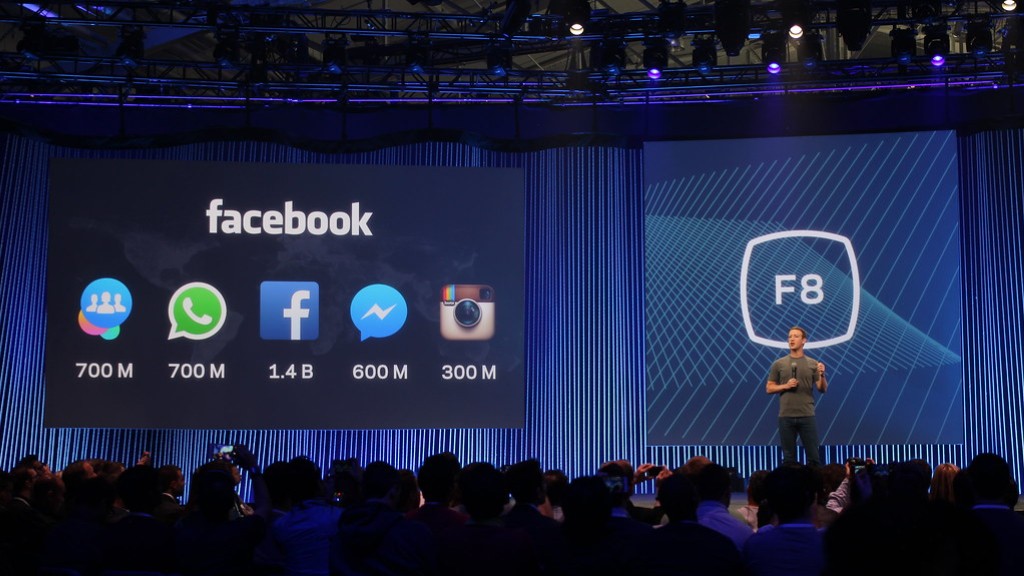The marketing mix and marketing strategy are two terms that are often used interchangeably, but there is a key difference between the two. Marketing mix refers to the specific elements that make up a company’s marketing program, such as the product, pricing, promotion, and distribution. Marketing strategy, on the other hand, is the overall game plan that coordinates the marketing mix to achieve specific marketing objectives. In other words, the marketing mix is the toolbox that contains the various marketing mix elements, while the marketing strategy is the road map that tells you how to use those tools to reach your destination.
The marketing mix is the combination of product, price, place, and promotion used to market a product or service. The marketing strategy is the overarching plan that ties together the marketing mix to achieve the desired marketing objectives.
Are marketing strategy and marketing mix the same?
An effective marketing strategy combines the 4 Ps of the marketing mix. It is designed to meet the company’s marketing objectives by providing its customers with value. The 4 Ps of the marketing mix are related, and combine to establish the product’s position within its target markets.
The marketing mix is a key part of any marketing strategy and refers to the four key elements of a marketing strategy: product, price, place and promotion. These four elements are often referred to as the “four P’s” of marketing.
Product refers to the goods or services that a company offers. It is important to consider what potential customers want and need when designing a product.
Price refers to the amount that a customer is willing to pay for a product. Prices must be set in a way that covers the cost of producing the product while still making a profit.
Place refers to the distribution channels that are used to get the product to the customer. There are many different distribution channels, such as retail stores, online stores, or direct sales.
Promotion refers to the marketing activities that are used to promote a product. This can include advertising, public relations, and sales promotions.
What is the difference between marketing and marketing strategy
Marketing is the process of promoting products and services, from identifying a target market to guiding customers through the sales funnel. A marketing strategy lays out the actions a company must take to reach its ideal audience and achieve a competitive advantage in the market.
There are many different facets to marketing, but at its core, marketing is about understanding the needs and wants of your target market and then creating a campaign that will resonated with them. It’s important to have a solid understanding of your target market before you begin creating your marketing strategy. Once you know who your target market is, you can begin to craft a message that will appeal to them.
Your marketing strategy should be designed to help you achieve your business goals. It should be flexible and adaptable, so that you can make changes as needed. And, most importantly, it should be measurable so that you can track your progress and adjust your tactics as needed.
Targeted marketing is a very effective way to reach a specific group of consumers with a customized message. By targeting a specific group, you are able to focus your marketing mix to create the right offer and approach for that group. This can be a very effective way to increase sales and grow your business.
What are the 4 main marketing strategies?
The four Ps are product, price, place, and promotion. They are an example of a “marketing mix,” or the combined tools and methodologies used by marketers to achieve their marketing objectives.
Product: The first P is product. In order to have a successful product, it must be able to meet the needs and wants of the target market. It must also be unique and differentiated from the competition.
Price: The second P is price. In order for a product to be successful, the price must be set at a level that is affordable for the target market and that allows the company to generate a profit.
Place: The third P is place. In order for a product to be successful, it must be available in the right place at the right time. This means that the product must be available in the right channels and in the right quantities.
Promotion: The fourth P is promotion. In order for a product to be successful, it must be promoted in a way that is effective and efficient. This means using the right mix of advertising, public relations, and sales promotion.
A marketing strategy is a plan that helps a company achieve its marketing goals. It contains the company’s value proposition, key brand messaging, data on target customer demographics, and other high-level elements. A thorough marketing strategy covers the four Ps of marketing: product, price, place, and promotion.
What’s another word for marketing strategy?
There is no one definitive answer for this question as there are a variety of marketing strategies that can be used, each with its own unique set of objectives and goals. However, some common marketing strategies that come to mind include things like product placement, pricing strategies, target market selection, and promotional campaigns.
The marketing mix is an important concept in marketing. It refers to the set of actions, or tactics, that a company uses to promote its brand or product in the market. The 4Ps make up a typical marketing mix – Price, Product, Promotion and Place.
Price is the amount of money that customers pay for a product. Product refers to the physical product or service that a company offers. Promotion includes all of the activities that a company does to communicate with customers and prospects about its products, including advertising, public relations, and sales. Place is where a product is sold or distributed.
The marketing mix is a flexible tool that can be adapted to different situations. For example, a company might use a different mix of the 4Ps when marketing to businesses than when marketing to consumers.
The marketing mix is a key element of any marketing plan. It is important to understand the role that each of the 4Ps plays in the mix and to have a clear strategy for how they will be used.
What is meant by marketing mix
A company’s marketing mix is the combination of products, pricing, places and promotions it uses to differentiate itself from the competition. These four elements are commonly referred to as the “four Ps”. There is strong dependency between each of the Ps. For example, a change in product may require a change in pricing. Or a change in promotion may require a change in placement. The four Ps need to be in alignment with each other in order to be effective.
A marketing strategy is a plan of action designed to achieve a specific marketing goal. For example, if your marketing plan is to promote a new product or service, you might have a strategy dedicated to how you’re going to use email marketing to support these broader goals. Marketing strategies can also be designed around specific channels, such as social media, paid advertising, or public relations.
What are the 3 marketing strategy?
Call to Action (CTA)
As the name suggests, a call to action is a request for the reader to take some sort of action, usually related to the product or service being marketed. The CTA can be as simple as “Buy Now!” or “Click Here to Learn More.”
Top of Mind Awareness (TOMA)
TOMA refers to the idea that the first brand that comes to mind when thinking about a particular product or service is the one that is most likely to be purchased. This is why it’s so important for businesses to focus on becoming the top-of-mind choice for their target consumers.
Point of Purchase (PoP)
PoP marketing is all about making the purchase process as easy and convenient as possible for the consumer. This can be done through things like in-store displays and promotions, as well as online features like one-click buying and delivery options.
An effective marketing strategy should include the 6 P’s of marketing: product, price, place, promotion, people, and presentation. By effectively integrating these 6 P’s, you can create a foundation for an effective growth strategy.
What are the examples of marketing mix
The 7Ps of the marketing mix are product, price, place, promotion, packaging, positioning, and people. Each of these elements is important in its own right, and together they can create a powerful marketing strategy for any business.
Product: The product is the centerpiece of the marketing mix and everything else revolves around it. Everything from the packaging to the price point needs to be aligned with the product itself.
Price: The price of a product needs to be competitive, but also needs to cover the costs of production and distribution.
Place: The place or distribution channel is where the product will be made available to the customer. This could be a brick-and-mortar store, an online store, or even a subscription service.
Promotion: Promotion is all about getting the word out about the product and generating interest. This can be done through advertising, PR, events, and social media.
Packaging: Packaging is an important part of the product and needs to be designed with the customer in mind. It should be eye-catching and convey the key features of the product.
Positioning: Positioning is how a product is positioned in the market in relation to competitors
A company that engaging in target marketing typically identifies commonalities between customers in a target market and then designs marketing initiatives specifically for those customers. That way, the company can use its marketing resources more efficiently and effectively, resulting in increased sales and profits.
There are a number of different ways to market to a target audience, including advertising, public relations, and direct marketing. Each approach has its own advantages and disadvantages, so it’s important to choose the one that makes the most sense for your company, products, and services.
Target marketing can be an extremely powerful tool, but it’s important to remember that not every company or product is a good fit for this type of approach. If you’re not careful, you can easily end up wasting time and money on marketing efforts that don’t produce results.
What are the five strategies of marketing mix?
The 5 P’s of marketing are a key part of a successful marketing mix. Product, place, price, promotion, and people are all important factors in marketing. By using a specific 5 P’s framework, brands can more effectively market their products and services.
There are many benefits to social media marketing for small businesses. It is a cost-effective way to reach a large audience, it helps build brand awareness and recognition, and it can create an engaged community of customers and potential customers around your business. Additionally, social media marketing can help to boost online sales and generate leads for your business.
To be successful with social media marketing, it is important to choose the right platform for your business and to create engaging and interesting content that will appeal to your target audience. It is also important to be active on social media, interacting with your followers and potential customers on a regular basis. With a little effort, social media marketing can be a powerful tool for small businesses.
What is the best type of marketing strategy
Content marketing is an effective marketing strategy for small businesses for several reasons:
1. It’s relatively affordable – you can produce most content yourself or outsource it for a reasonable price.
2. It’s versatile – there are many different types of content you can create, and you can tailor it to your specific target audience.
3. It’s easy to measure – you can track how many people view or engage with your content, and adjust your strategy accordingly.
Overall, content marketing is a great way to reach your target audience with minimal expense. If you’re looking for an effective marketing strategy for your small business, content marketing should be at the top of your list.
In order to create a successful marketing plan, there are several important steps that must be taken. First, it is important to understand both the market and the competition. This will allow you to better understand your customers and how to reach them. Next, you must develop a marketing message that is clear and concise. Once you have done this, you can determine which marketing mediums will be most effective in reaching your target audience. Finally, you must set sales and marketing goals, as well as create a marketing budget. By following these steps, you will be well on your way to developing a successful marketing plan.
Warp Up
The main difference between marketing mix and marketing strategy is that marketing mix is a tool that can be used to achieve marketing objectives, while marketing strategy is the overarching plan that guides marketing decisions. Marketing mix consists of the four Ps of marketing: product, price, place, and promotion. Marketing strategy takes into account the overall business goals and objectives, and then creates a plan to achieve these goals through the use of marketing mix.
There is a big difference between marketing mix and marketing strategy. Marketing mix is a term used to describe the different elements that go into making a product or service successful. Marketing strategy is the overarching plan that ties all the different marketing mix elements together to achieve desired objectives.





